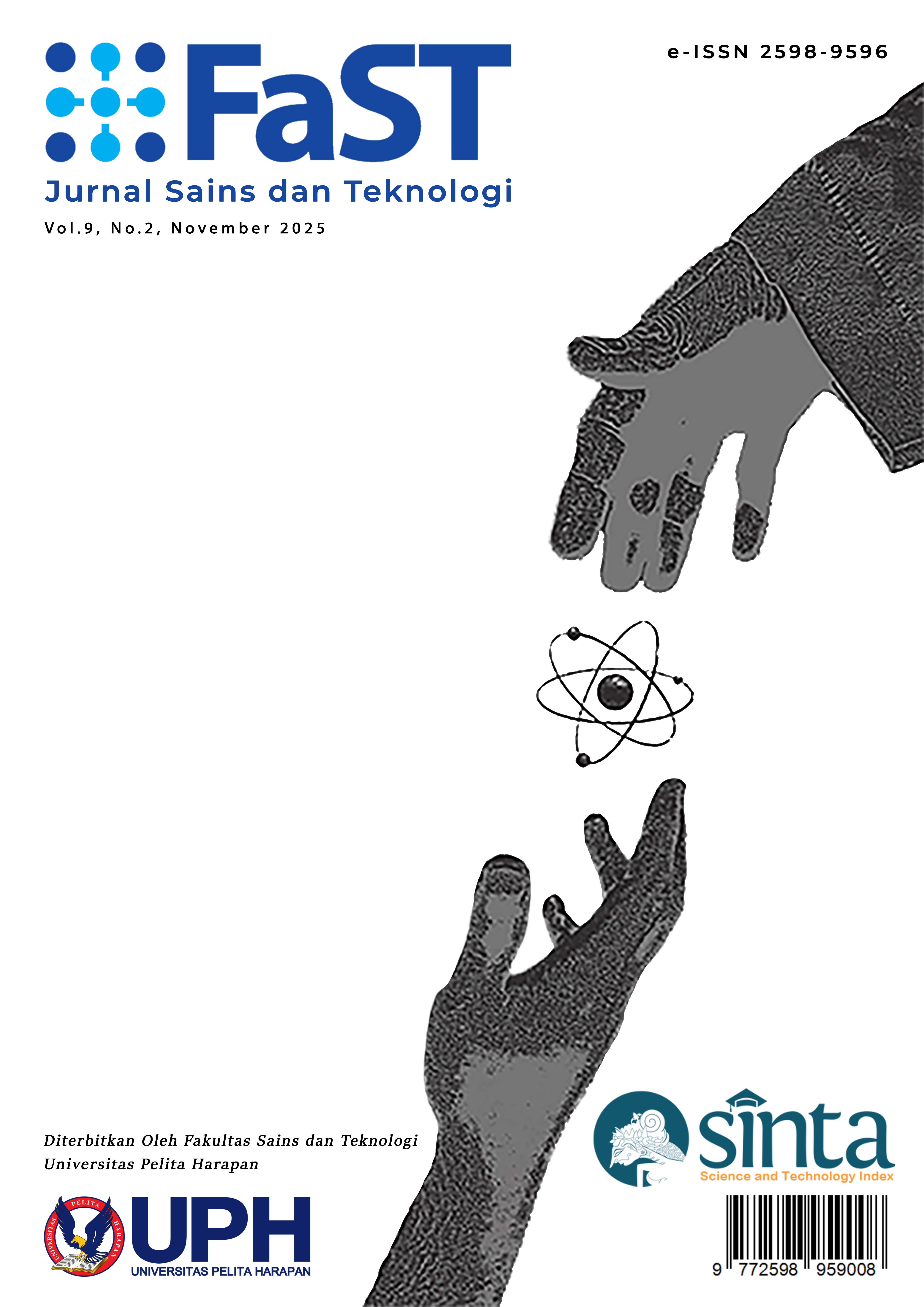Analisis Keamanan Kunci-Pintu Nirkabel Mobil dengan Software Defined Radio (SDR)
[Analysis of Wireless Car-Key Security with Software Defined Radio (SDR)]
DOI:
https://doi.org/10.19166/jstfast.v9i2.1994Keywords:
keamanan nirkabel, kontrol nirkabel, peretasan mobil, software defined radio, car hacking, wireless control, wireless securityAbstract
Wireless Communication is not a new phenomenon in the 21st century. Many devices are using wireless technology, including opening a car’s door using a remote wireless key. To ensure the security of a wireless system, certain encryption methods and algorithms are used. The rolling code techniques, where the encryption code will be rolled to a different code after usage, are often found in wireless car key systems. This paper describes the analysis of the wireless car-key security by trying to take over control by using Software Defined Radio (SDR). The security is tested using a simple mechanism of save-and-replay, in which the signal from the wireless car-key is received by an SDR and saved into a computer within a large distance from the car. If the car-key signal is not received by the car, the rolling code mechanism might not be triggered. Then the same car-key signal can be replayed to try to open the car door. A few cars which we tested can be opened in such a way. In this paper some security practices will be suggested to avoid the save-replay hacking mechanism with SDR.
Bahasa Indonesia Abstract: Komunikasi nirkabel bukanlah suatu fenomena yang baru pada abad ke-21. Banyak alat yang memanfaatkan teknologi nirkabel, termasuk membuka pintu mobil dengan kunci nirkabel. Untuk menjamin keamanan sistem nirkabel biasanya dilakukan dengan algoritma dan metode enkripsi tertentu. Metode keamanan dengan mekanisme rolling code, di mana kode enkripsi yang digunakan selalu berganti ke kode yang berbeda setelah dipakai, biasanya ditemukan dalam sistem kunci nirkabel mobil. Paper ini menjelaskan analisis tingkat keamanan dari sistem kunci-mobil nirkabel dengan berusaha mengambil alih kendali berbekal Software Defined Radio (SDR). Keamanan akan diuji dengan mekanisme yang cukup sederhana, yakni simpan dan kirim, di mana sinyal dari kunci nirkabel akan ditangkap dengan SDR dan disimpan ke dalam komputer dengan jarak yang cukup jauh dari mobil. Jika sinyal kunci tidak ditangkap mobil, maka mekanisme rolling code tidak terpicu. Setelah itu sinyal yang sama dapat diputar ulang untuk mencoba membuka kunci mobil. Beberapa mobil yang diuji dapat dibuka dengan cara demikian. Dalam paper ini juga akan diusulkan praktik pengamanan untuk menghindari pembukaan kunci dengan mekanisme simpan-kirim dengan SDR.
References
Benadjila, R., Renard, M., Lopes-Esteves, J., & Kasmi, C. (2017). One car, two frames: attacks on hitag-2 remote keyless entry systems revisited. In 11th {USENIX} Workshop on Offensive Technologies ({WOOT} 17).
Francillon, A., Danev, B., & Capkun, S. (2011). Relay attacks on passive keyless entry and start systems in modern cars. In Proceedings of the Network and Distributed System Security Symposium (NDSS). Eidgenössische Technische Hochschule Zürich, Department of Computer Science.
Garcia, F. D., Oswald, D., Kasper, T., & Pavlidès, P. (2016). Lock it and still lose it—on the (in) security of automotive remote keyless entry systems. In 25th {USENIX} Security Symposium ({USENIX} Security 16).
Ibrahim, O. A., Hussain, A. M., Oligeri, G., & Di Pietro, R. (2018). Key is in the Air: Hacking Remote Keyless Entry Systems. In Security and Safety Interplay of Intelligent Software Systems (pp. 125-132). Springer, Cham. https://doi.org/10.1007/978-3-030-16874-2_9
Kumbhar, A. (2017). Overview of ISM bands and Software-defined Radio Experimentation. Wireless Personal Communications, 97(3), 3743-3756. https://doi.org/10.1007/s11277-017-4696-z
Martoyo, I., Coandi, A., Pratignyo, D., Kanalebe, H. Y., Uranus, H. P., & Pardede, M. (2018, November). Software Defined Radio Applications for Mini GSM BTS and Spectrum Analyzer with BladeRF. In 2018 International Conference on Radar, Antenna, Microwave, Electronics, and Telecommunications (ICRAMET) (pp. 108-111). IEEE. https://doi.org/10.1109/ICRAMET.2018.8683935
Quintero, J. C. M., Cuesta, E. P. E., & Sarmiento, A. T. C. (2021). Vulnerability analysis in RF locking systems of vehicles in Bogotá, Colombia. Indonesian Journal of Electrical Engineering and Informatics (IJEEI), 9(1), 114-129. https://doi.org/10.11591/ijeei.v9i1.2450
Quintero, J. C. M., Cuesta, E. P. E., & Lopez, L. J. R. (2023). A new method for the detection and identification of the replay attack on cars using SDR technology and classification algorithms. Results in Engineering, 19, 101243. https://doi.org/10.1016/j.rineng.2023.101243
Smith, C. (2016). The Car Hacker’s Handbook: A Guide for Penetration Tester. No Strach Press, San Francisco. https://doi.org/10.4271/1593277032
Verstegen, A., Verdult, R., & Bokslag, W. (2018). Hitag 2 Hell–Brutally Optimizing Guess-and-Determine Attacks. In 12th {USENIX} Workshop on Offensive Technologies ({WOOT} 18).
Yang, Q., & Huang, L. (2018). 433/315 MHz Communication. In Inside Radio: An Attack and Defense Guide (pp. 123-171). Springer, Singapore. https://doi.org/10.1007/978-981-10-8447-8_4
Downloads
Published
Issue
Section
License
Copyright (c) 2025 Ihan Martoyo

This work is licensed under a Creative Commons Attribution-ShareAlike 4.0 International License.
“Authors who publish with this journal agree to the following terms:
1) Authors retain copyright and grant the journal right of first publication with the work simultaneously licensed under a Creative Commons Attribution License (CC-BY-SA 4.0) that allows others to share the work with an acknowledgement of the work's authorship and initial publication in this journal.
2) Authors are able to enter into separate, additional contractual arrangements for the non-exclusive distribution of the journal's published version of the work (e.g., post it to an institutional repository or publish it in a book), with an acknowledgement of its initial publication in this journal.
3) Authors are permitted and encouraged to post their work online (e.g., in institutional repositories or on their website). The final published PDF should be used and bibliographic details that credit the publication in this journal should be included.”



